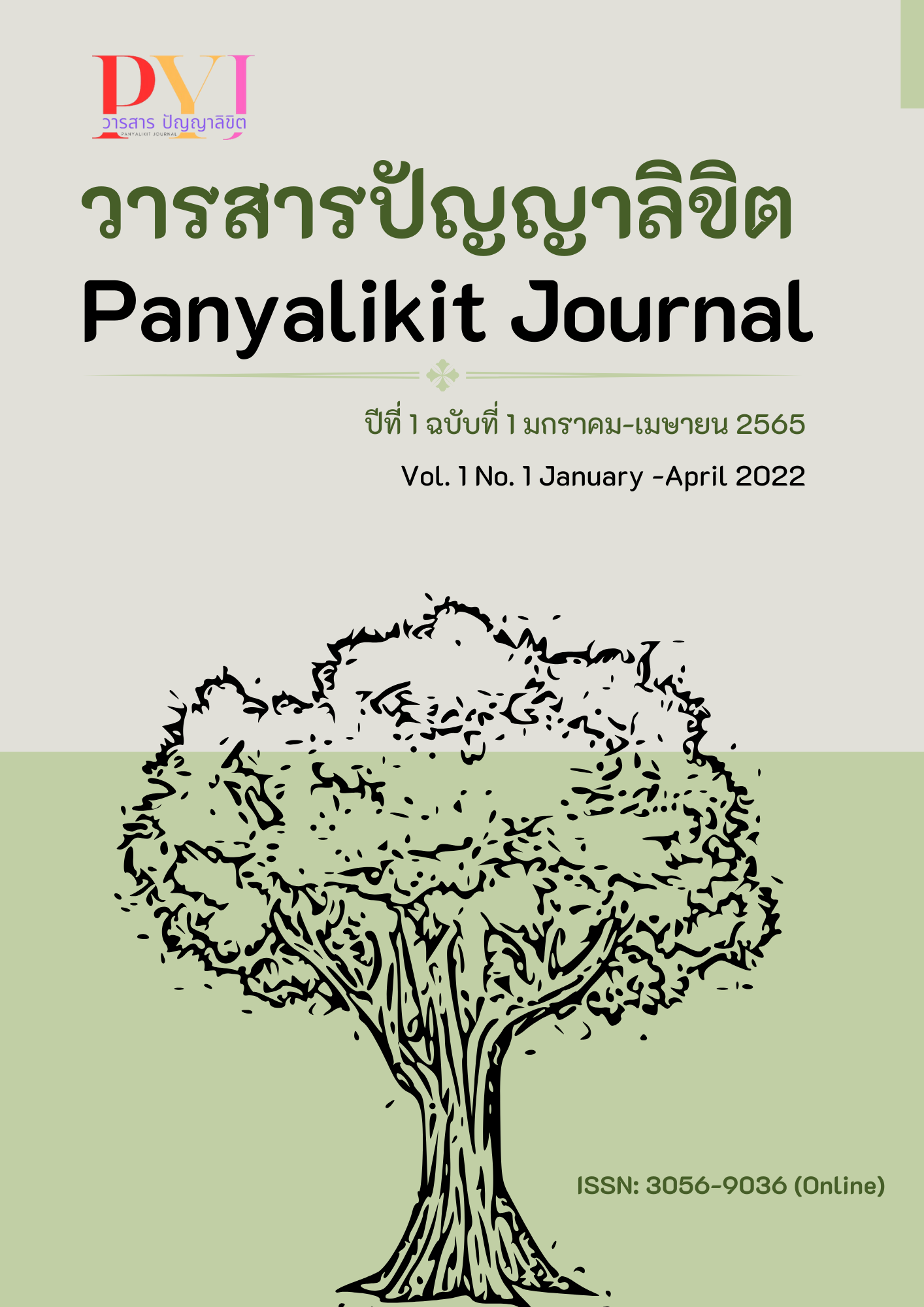The treatment of Buddhists for depression
Main Article Content
Abstract
Depression is a symptom of mood disorder that affects people with their thoughts, feelings, and behavior. Depression is a continuous emotional distress. The apathy, the discontent, the ability to work each day, which can cause a lot of mental symptoms. A difficult way to live a normal life or feel that life has no value. The real cause of depression is unclear because of its association with mental disorders. Many factors can affect it. Be very careful. Especially in patients with severe thoughts, with high probability of suicide if there is even a single concussion. According to statistics, more than 60 percent of suicidal patients are also present in the treatment of antidepressants. The main treatment is the use of medications in the antidepressive group. If necessary, a view to change the mindset, a discussion of a psychiatrist, the treatment of Buddhism, the practice of psychotherapy, emphasis on internal and external consciousness. It is an alternative to treating depression and helping to prevent stress, accumulate effectively, so that life can be normal, and the sooner the symptoms can recover quickly.
Article Details

This work is licensed under a Creative Commons Attribution-NonCommercial 4.0 International License.
References
กรมสุขภาพจิต. (2559). สติวิถีแห่งสุขภาพดี (Mindfulness For Healthy Lives). การประชุมวิชาการสุขภาพจิตนานาชาติ ครั้งที่ 15 การประชุมวิชาการสุขภาพจิตและจิตเวชเด็ก ครั้งที่ 13 ประจำปี 2559, กระทรวงสาธารณสุข, หน้า 1.
ณรงค์ สุภัทรพันธุ์, (2543). โรคอารมณ์ซึมเศร้า. กรุงเทพฯ: หน้าต่างสู่โลกกว้าง.
ดวงใจ กสานติกุล. (2552). โรคซึมเศร้าและโรคอารมณ์ผิดปกติรักษหายได้. กรุงเทพฯ: นำอักษร.
นันทิรา หงส์ศรีสุวรรณ์. (2559). ภาวะซึมเศร้า. วารสาร มฉก.วิชาการ 105, 19(38), 107.
นิตยาพร บุญก้อน. (2562). บทความด้านสุขภาพจิต โรคซึมเศร้า เรากำลังเป็นหรือเปล่า. สืบค้นเมื่อ 3 พฤษภาคม 2564, จาก https://www.dmh.go.th/news-dmh/view.asp?id=29704
บริษัท รีดเดอร์ส ไดเจสท์ (ประเทศไทย) จำกัด, (2544). บำบัดโรคด้วยการแพทย์ทางเลือก. กรุงเทพฯ: เพชรกะรัต.
พระครูปลัดมารุต วรมงฺคโล. (2562). การศึกษาวิเคราะห์พุทธจิตวิทยาในพระไตรปิฎก. สืบค้นเมื่อ 3 พฤษภาคม 2564, จาก http://www.mcu.ac.th/site/articlecontent_desc.php?
พระธรรมกิตติวงศ์ (ทองดี สุรเตโช). (2551). พจนานุกรมเพื่อการศึกษาพุทธศาสน์ “คำวัด”. พิมพ์ครั้งที่ 3. กรุงเทพฯ: สถาบันบันลือธรรม.
มหาจุฬาลงกรณราชวิทยาลัย. (2539). พระไตรปิฎกฉบับภาษาไทย ฉบับมหาจุฬาลงกรณราชวิทยาลัย. กรุงเทพฯ: มหาจุฬาลงกรณราชวิทยาลัย.
มหาจุฬาลงกรณราชวิทยาลัย. (2539). อรรถกถาภาษาไทย ฉบับมหาจุฬาลงกรณราชวิทยาลัย. กรุงเทพฯ: มหาจุฬาลงกรณราชวิทยาลัย.
ลักขณา สริวัฒณ์. (2544). จิตวิทยาในชีวิตประจำวัน. กรุงเทพฯ: โอเดียนสโตร์.
วินิตา รัตตบูรณินท์.(2542). อยู่ร้อยปีไม่มีแก่: ใช้ชีวิตอย่างไรจะไกลหมอ. พิมพ์ครั้งที่ 5, กรุงเทพฯ: ธรรมสภา.
สมาคมจิตแพทย์แห่งประเทศไทย. (2536). ตำราจิตเวชศาสตร์. พิมพ์ครั้งที่ 2. กรุงเทพฯ: มหาวิทยาลัยธรรมศาสตร์.
สุวดี ศรีวิเศษ. (2557). กลุ่มบําบัดโดยการแก้ปัญหาในผู้ป่วยที่มีภาวะซึมเศร้าและเสี่ยงต่อการฆ่าตัวตาย.กรุงเทพฯ: กระทรวงสาธารณสุข.
Bangkok Hospitol. (2562). ประเภทโรคซึมเศร้า (DEPRESSION). สืบค้นเมื่อ 3 พฤษภาคม 2564, จากhttps://www.bangkokhospital.com/th/disease-treatment/depression-type
Kabat-Zinn, J. (2003). Wherever you go, there you are: mindfulness meditation in everyday life. New York: Hyperion.
Selingman, M. (1991). Helplessness: On depression, development and death (second ed.). New York, USA: W.H. Freeman and Company.


